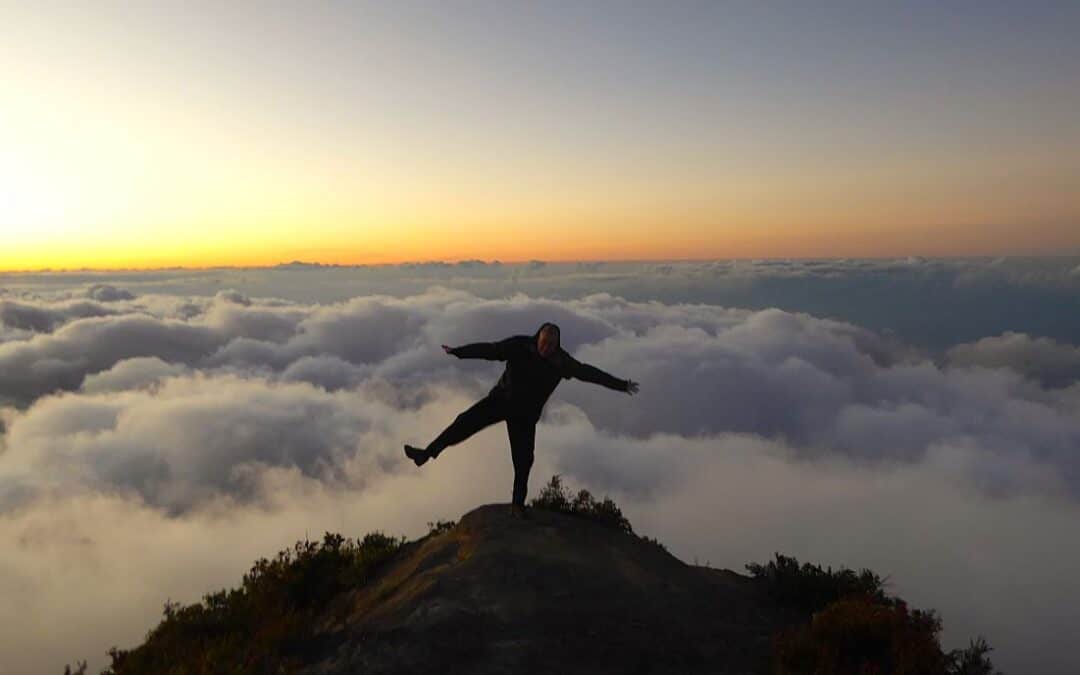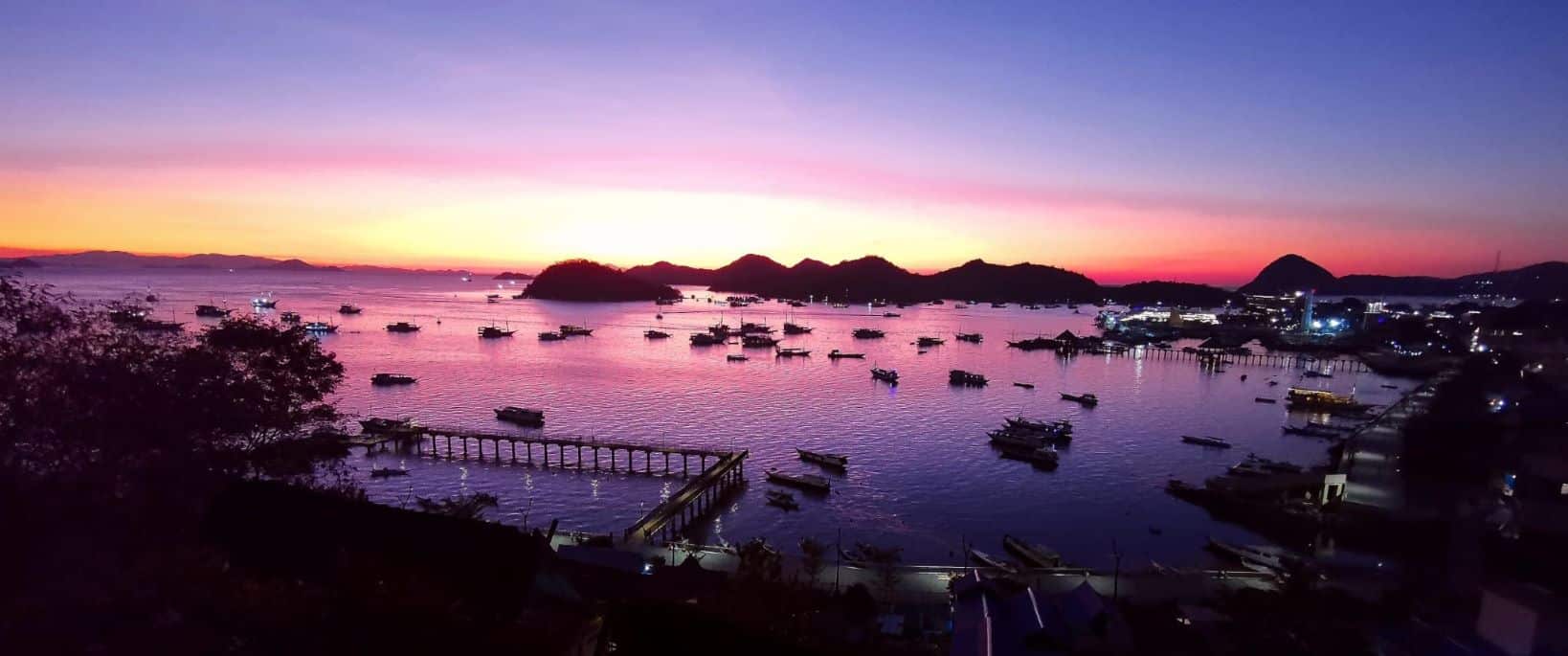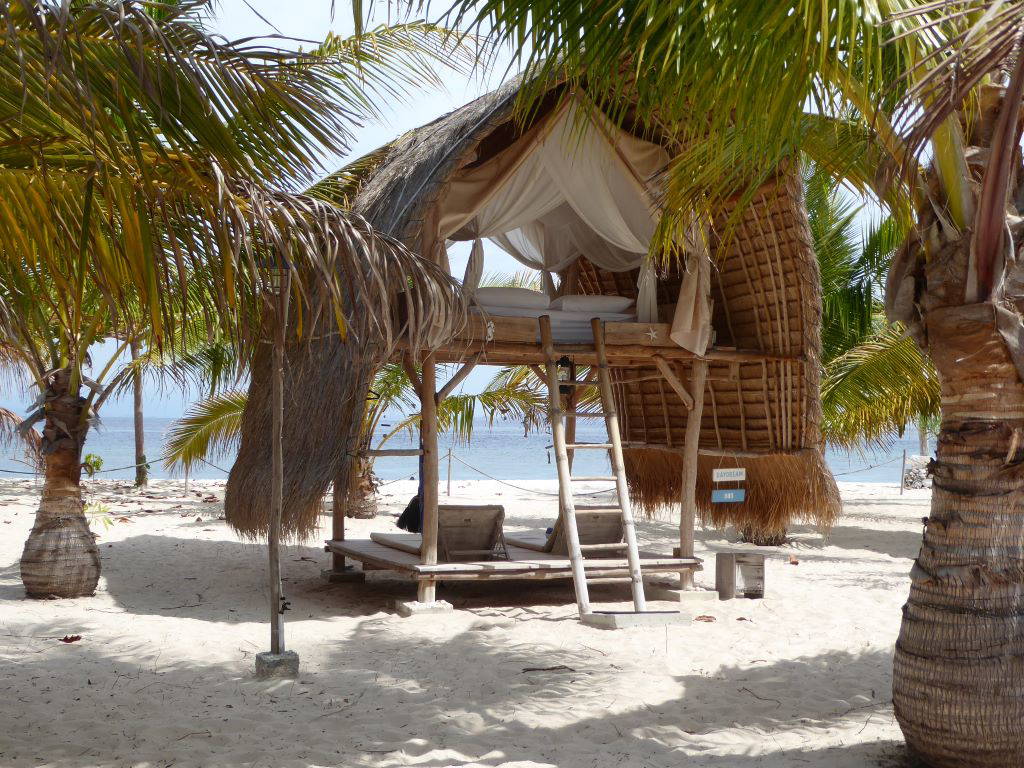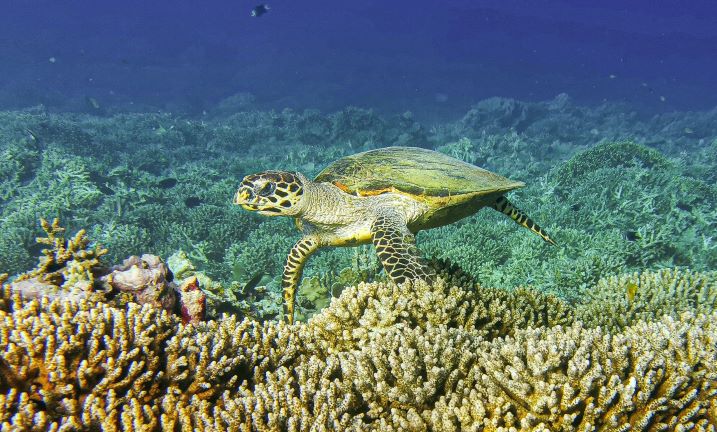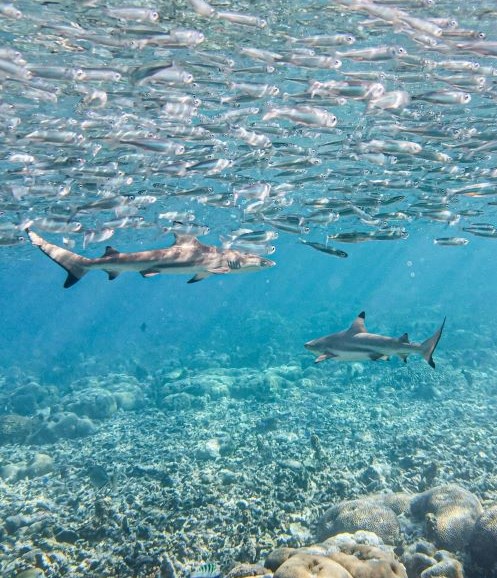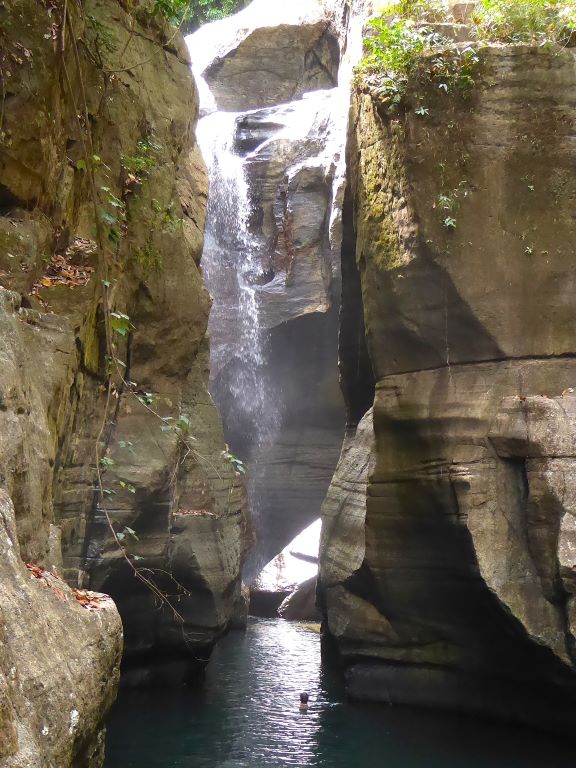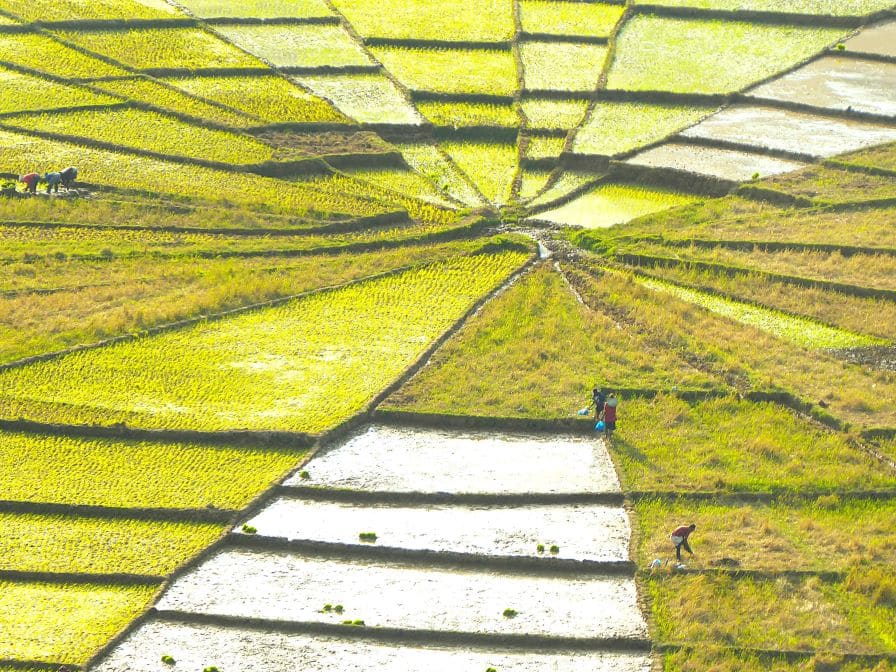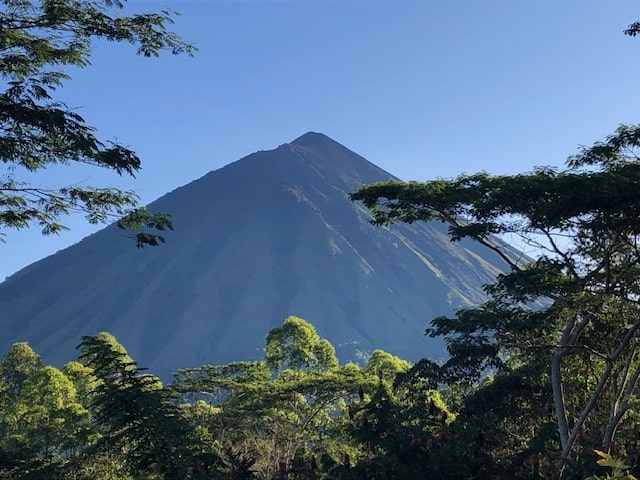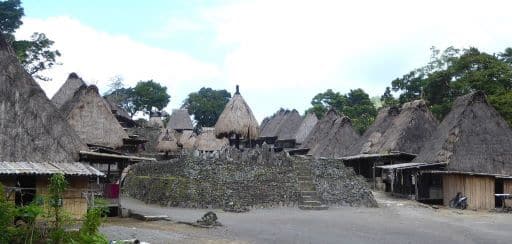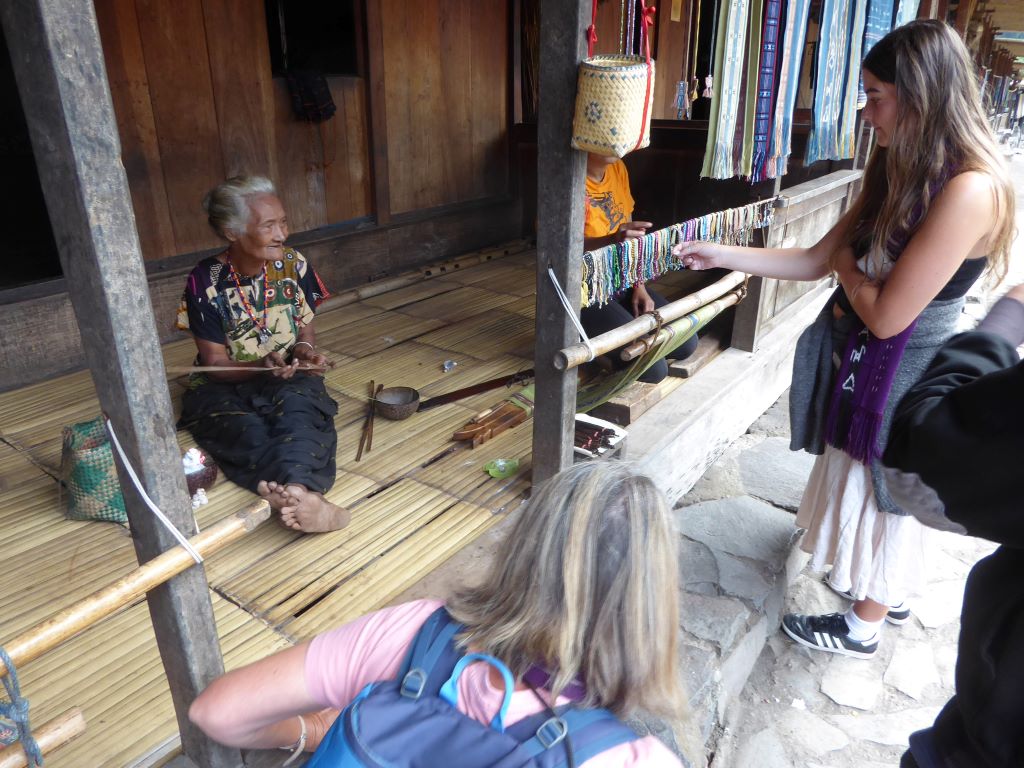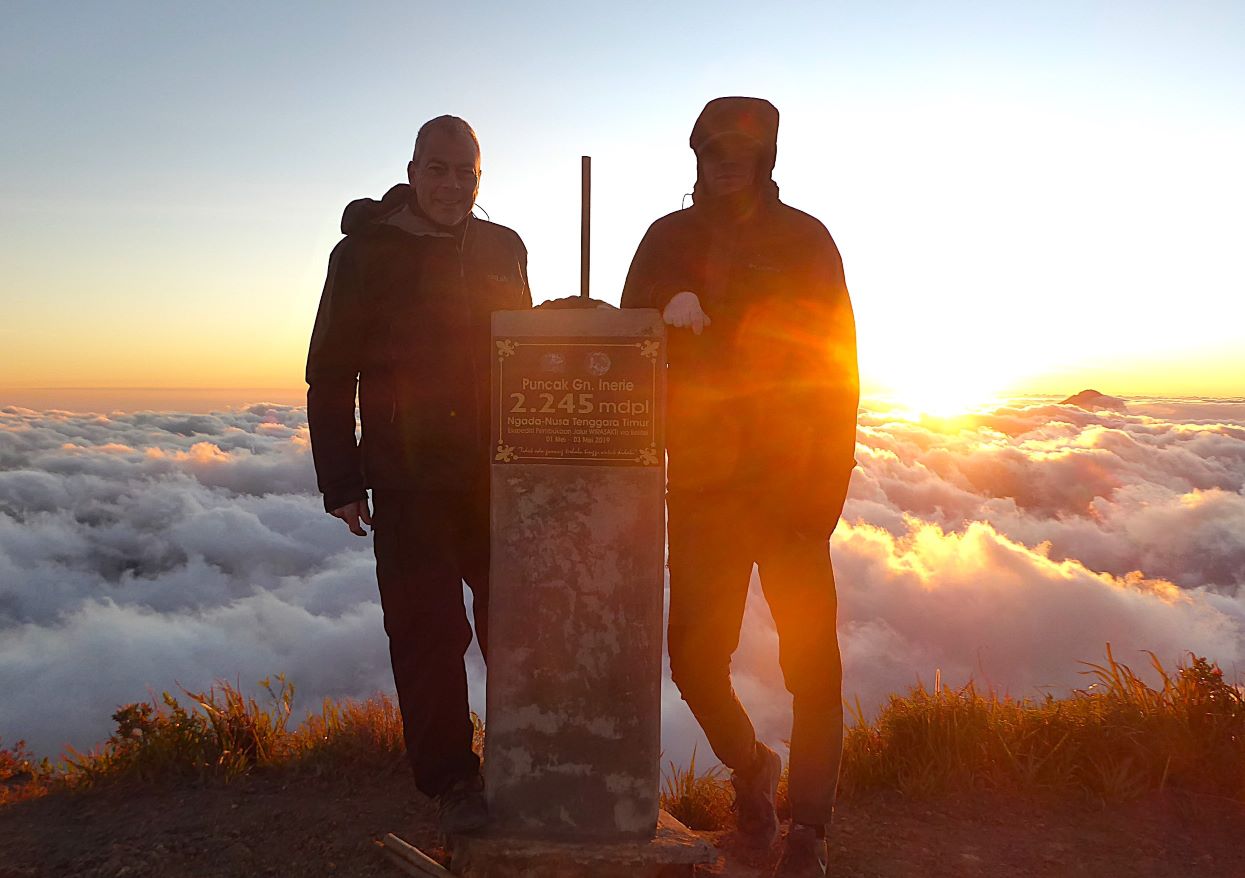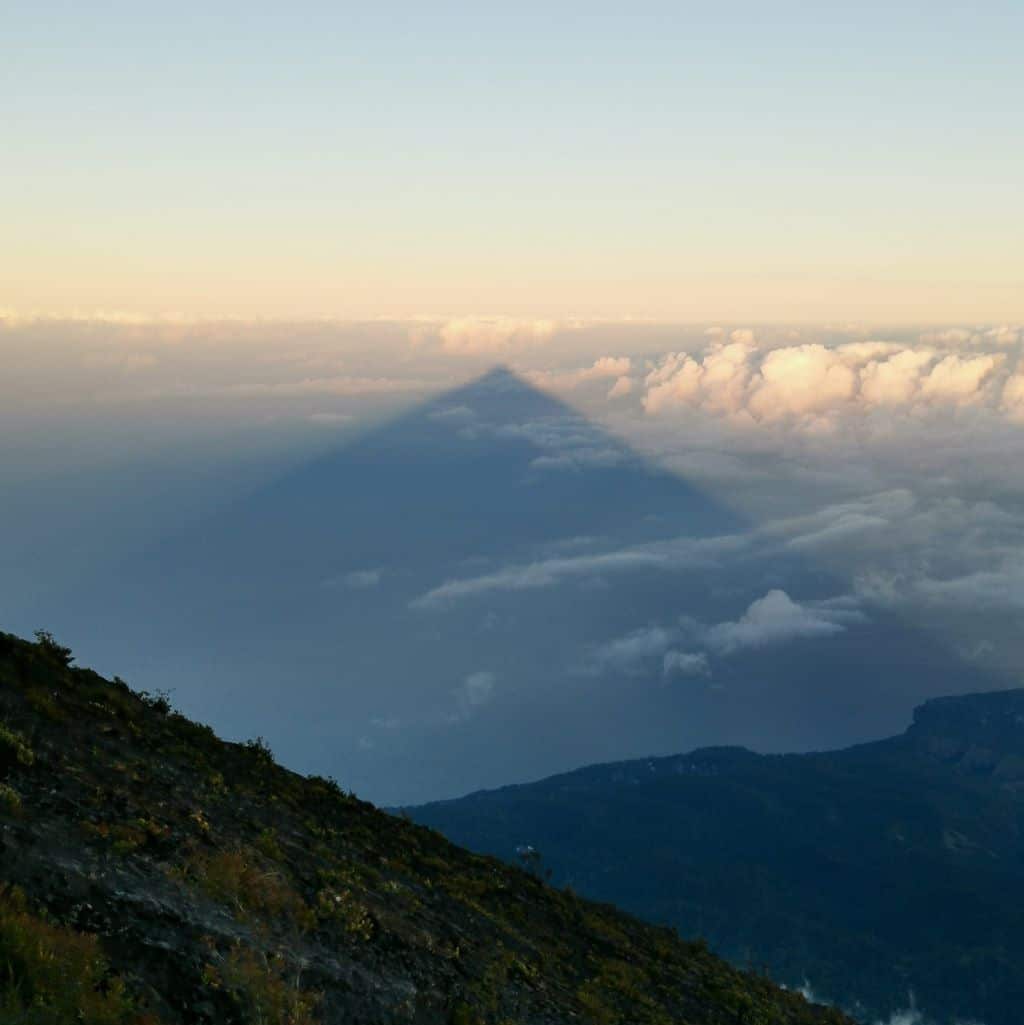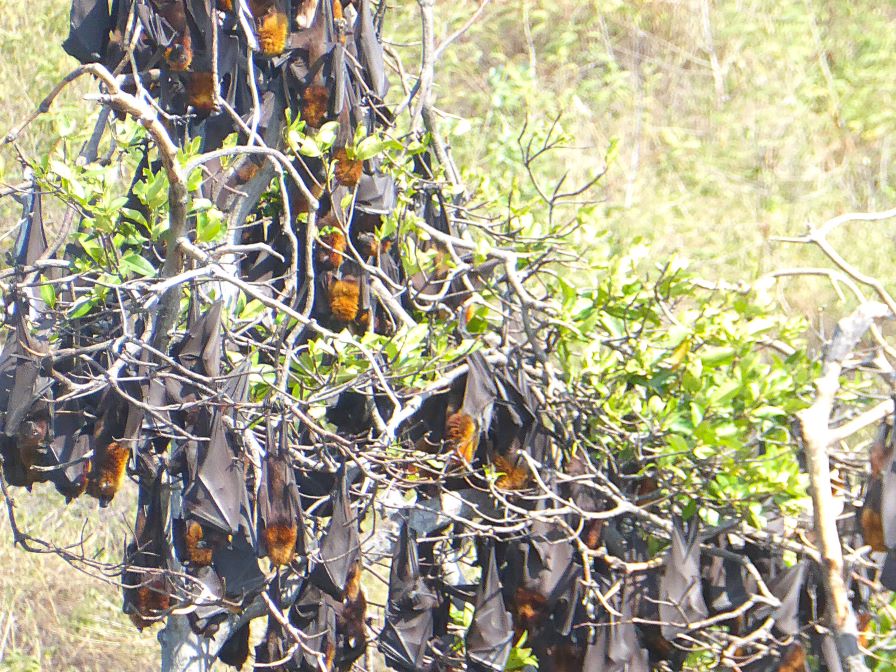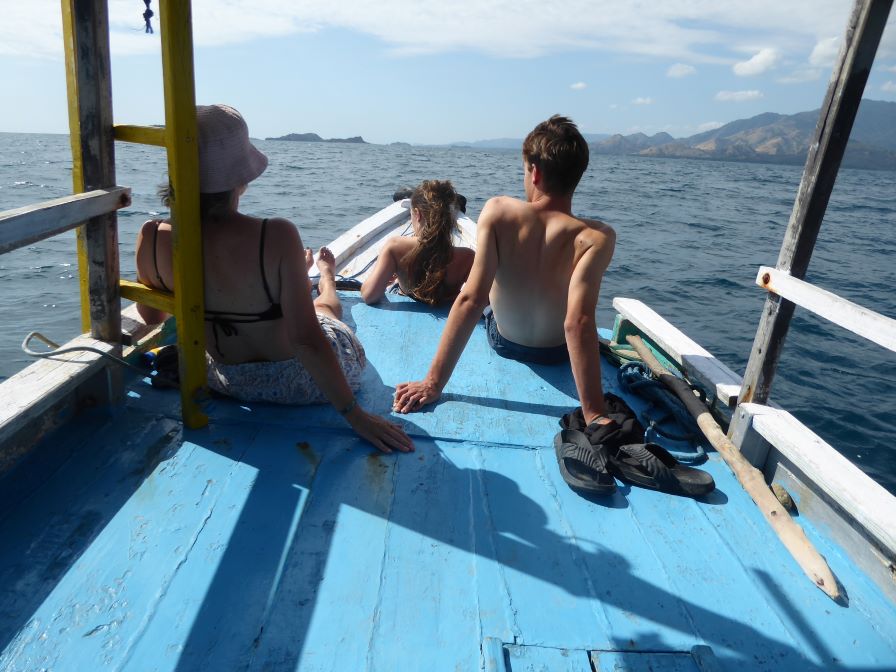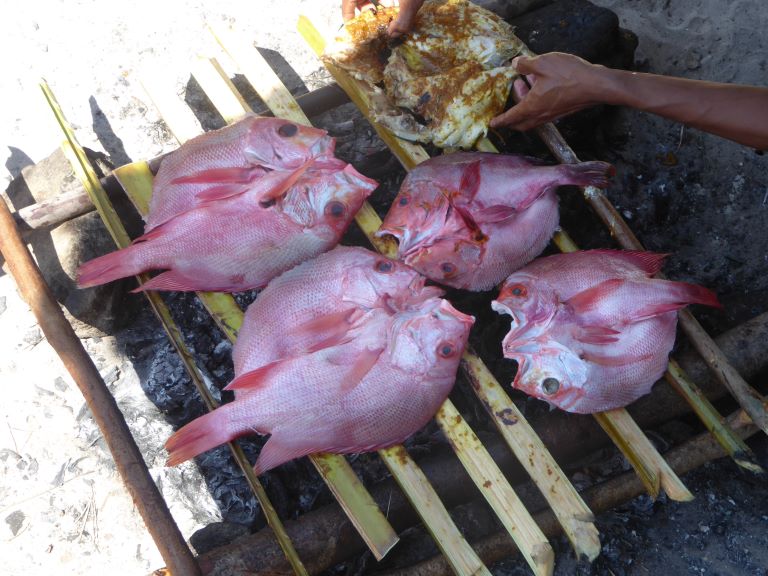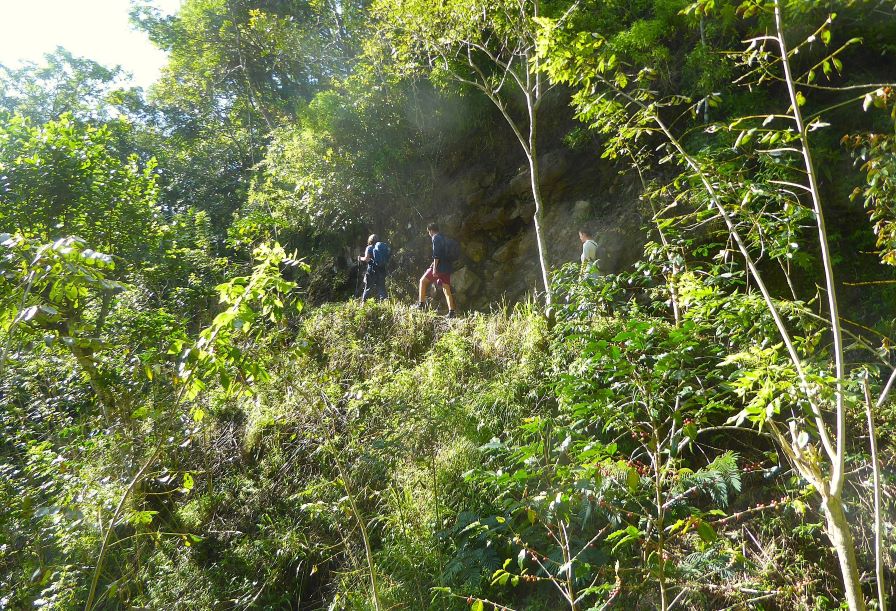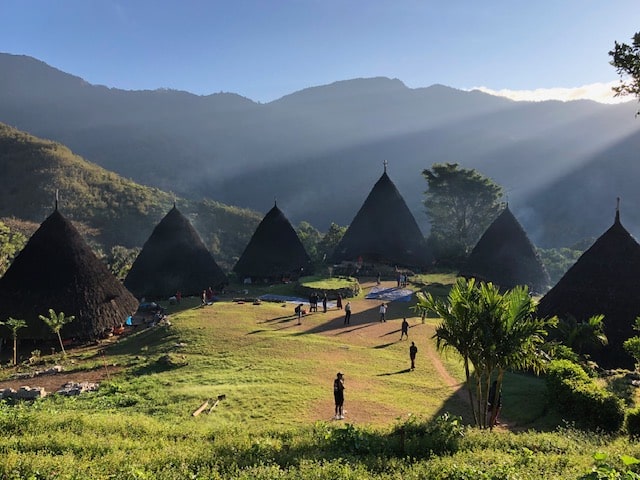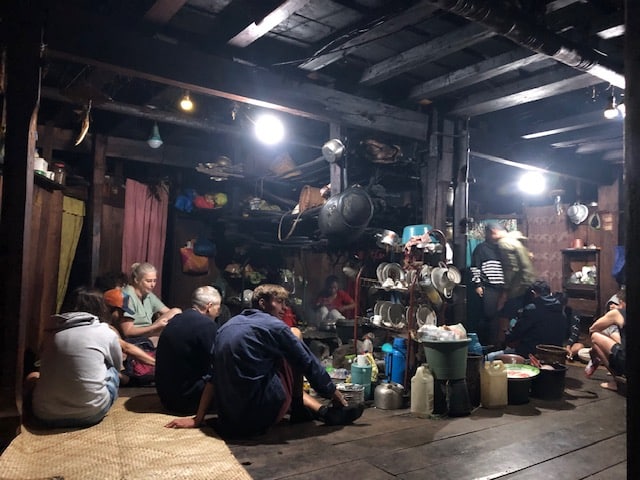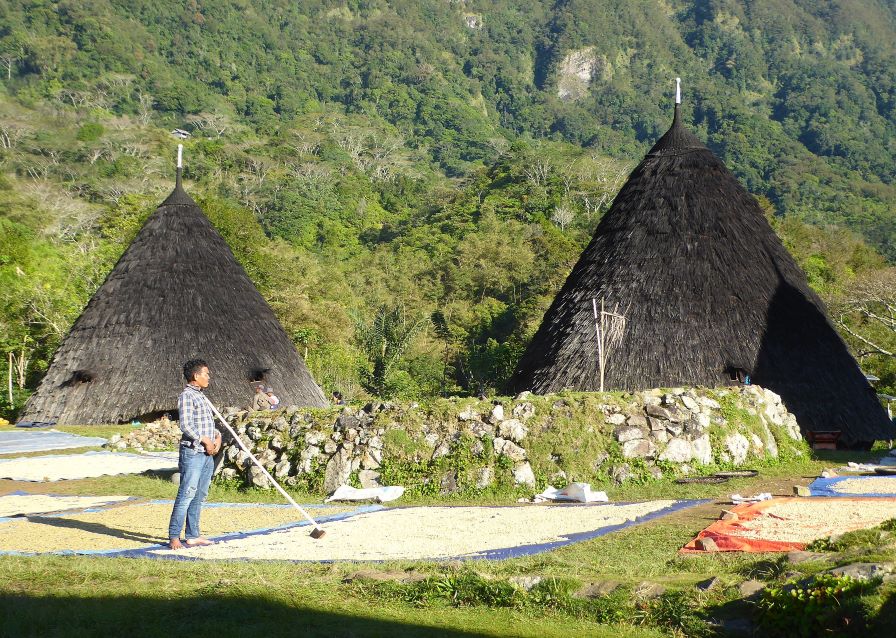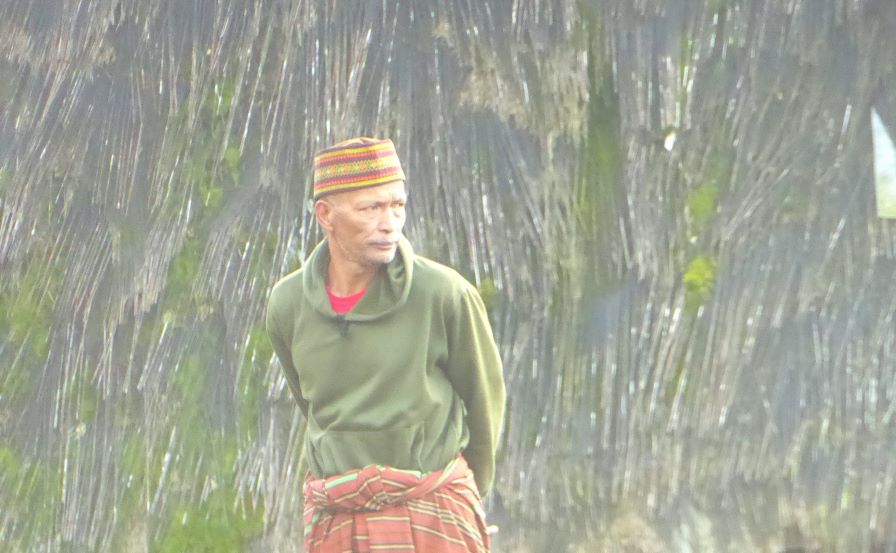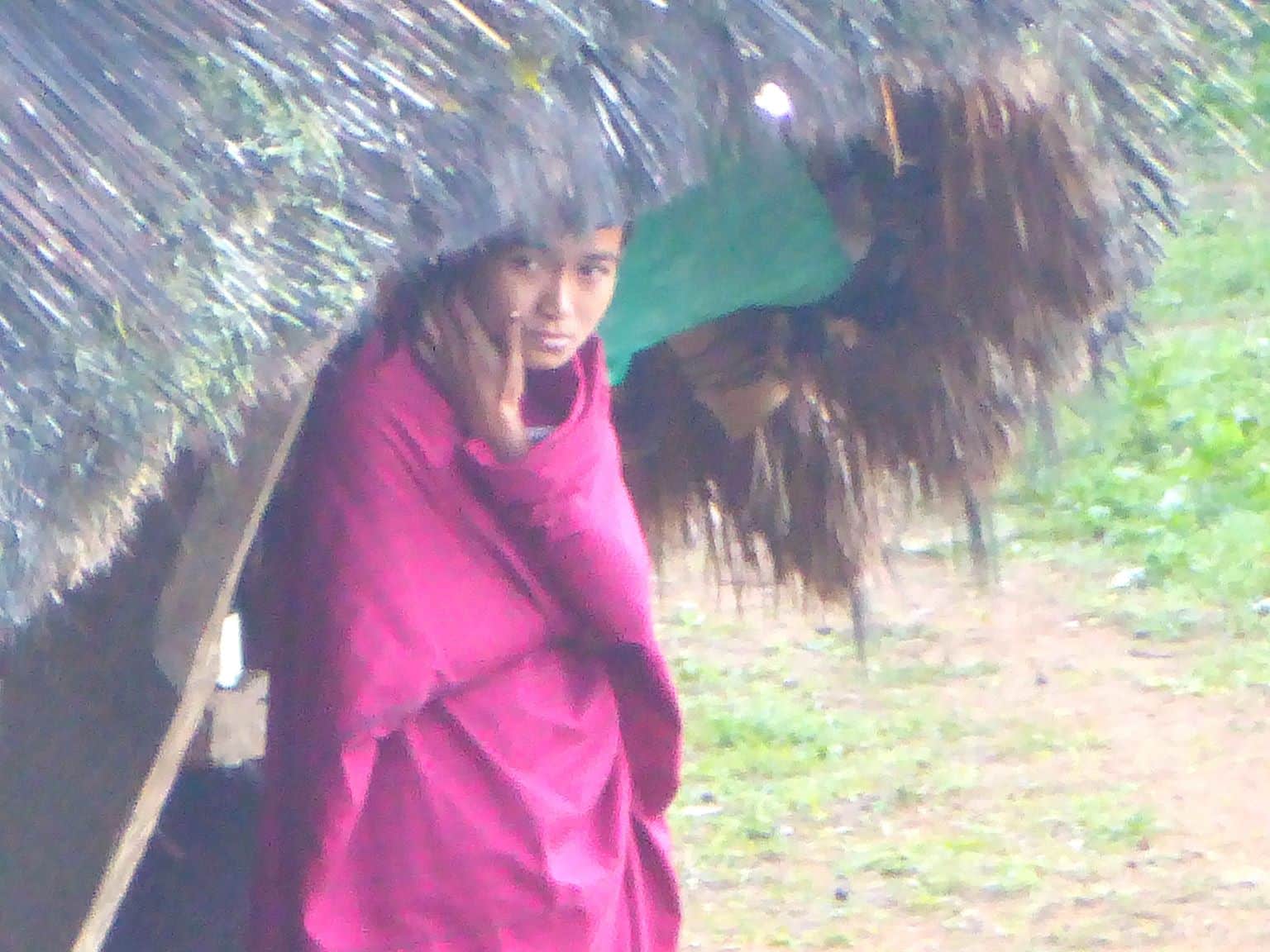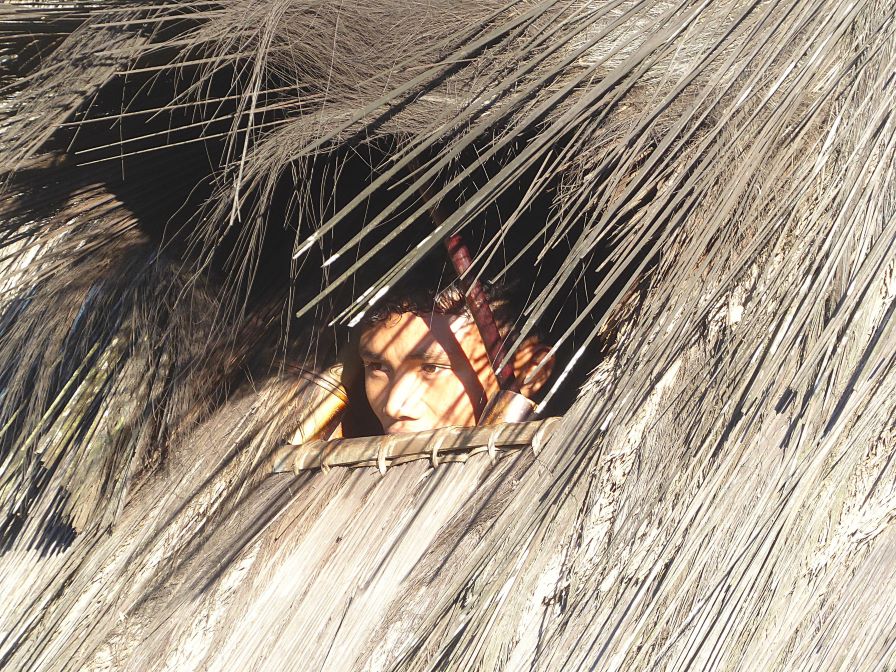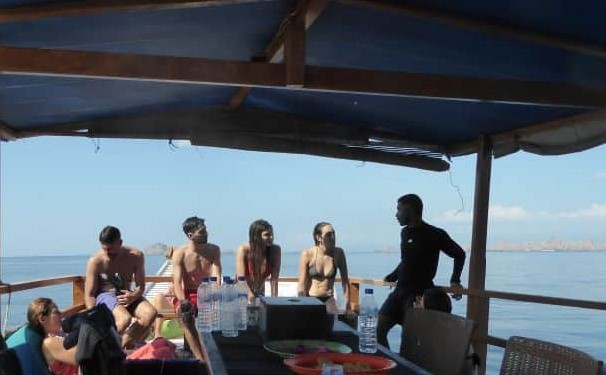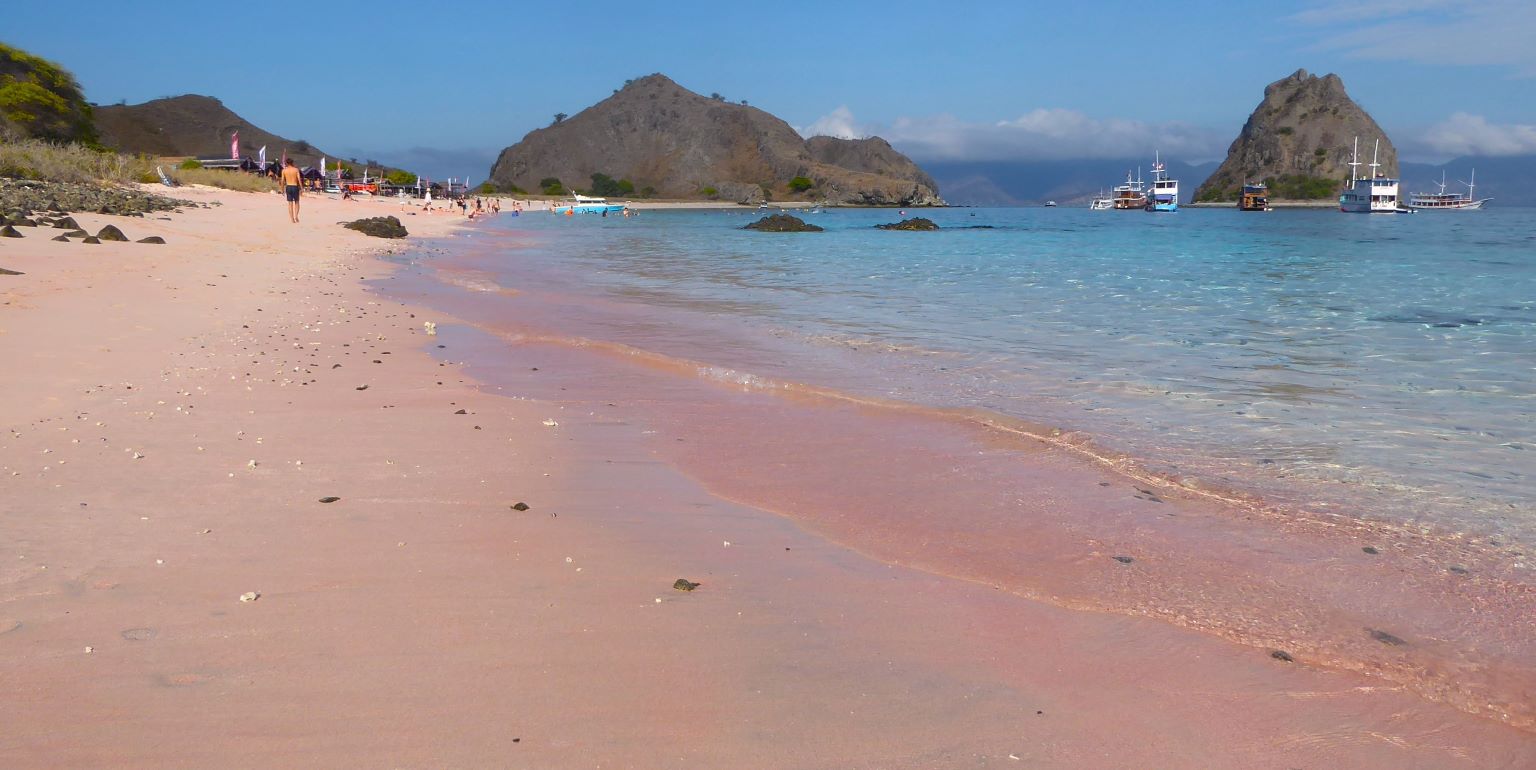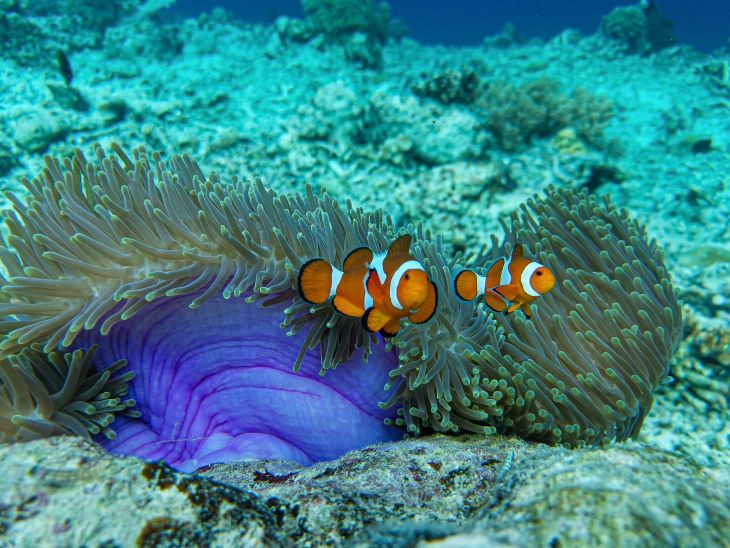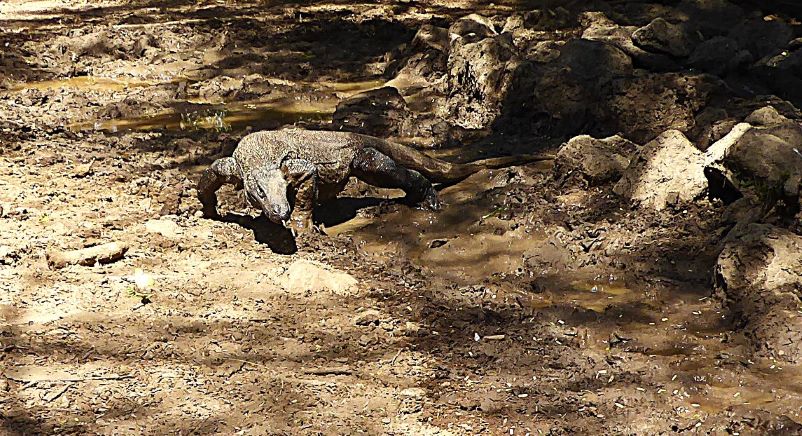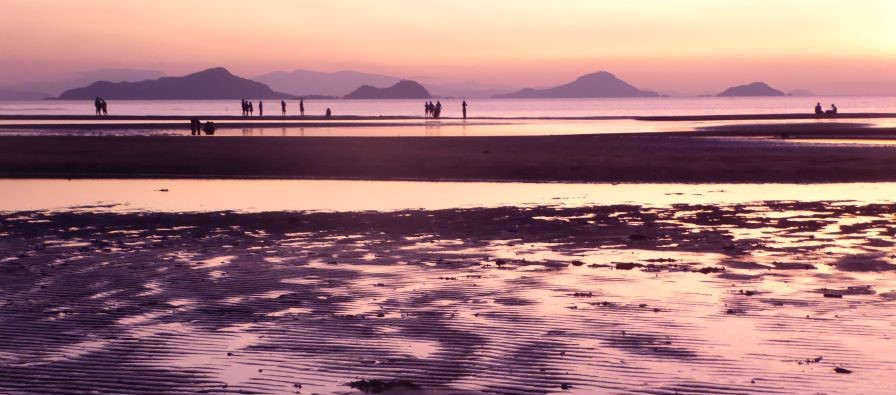Rob is just back from 3 weeks travelling with his family in East Nusa Tenggara, Indonesia and he reports here on their journey through Flores and its offshore islands.
An overnight stay at Jakarta airport was followed by a short flight onwards to Labuan Bajo at the western end of Flores. On our approach we could see below us the jagged volcanic islands of Komodo and we arrived into the bustling harbour town of ‘Bajo’ already excited by this aerial glimpse of what lay ahead.
We checked into a hillside guest-house to the south of the town which afforded a crows-nest view over the sea-front and – after a sublime fish-curry at a waterfront restaurant – gave us a wondrous sunset that evening.
The next morning, we were at the harbour early to take an hour’s boat-ride out to sea to a tiny islet where we spent the first 4 days proper of our trip snorkelling amidst and kayaking above the coral reef fringing the shore.
We stayed in 2-storey beach-huts with a gentle sea-breeze blowing through our raised sleeping quarters.
The marine life in this part of Indonesia is regarded as being amongst the best anywhere and we were lucky to see turtles and reef sharks as well as parrot fish, angel fish, neon tetras, lion fish, clams and large, electric-blue starfish. Joe is a budding marine ecologist and we benefited from his knowledge of the underwater world … and his underwater camera.
Having relaxed and adjusted our body clocks to ‘Indo-time’ we were ready to return to Bajo and begin our exploration of the interior of the mainland.
At the far eastern end of Indonesia, Flores is a 250-mile long and 50-mile wide island. Over the course of the next 8 days, we made a comprehensive journey around the western end of the island travelling by land-cruiser with a local driver.
The roads through the steeply mountainous terrain made for slow, winding progress but the surfaces were decent having been opportunistically upgraded during the quietude of the 2020 Covid lockdowns. Any sighting of us as western visitors elicited friendly shouts of ‘Hello’ and enthusiastic waves from children as we passed through their villages.
We’d heard that the scenery was dramatic, but it surpassed all our expectations with volcanoes looming above rainforest interspersed with rice paddies. It felt like driving through a vast botanical garden with giant bamboo groves, banyan trees and blossoming bougainvillea the backdrop to our journey.
An hour or so out of Bajo we stopped to hike down a steep hillside trail to swim in the gorge at Cunca Wulang. There is a beautiful cascade here and we took the chance to cool off from the 30 degree-heat by swimming along it’s length.
Later that afternoon we made another quick stop to walk up to the crest of a ridge north of the town of Ruteng to see the ‘Spider Web Rice Fields’. These are exactly how they sound, an intricate circular pattern of paddy fields extending across a broad plain below the surrounding hills which gleamed all shades of green and gold as the early evening sunlight bounced off their watery surfaces.
We stayed at a home-stay in Ruteng overnight and chatted over dinner with our friendly hosts, who reminded us that the Catholic religion prevails throughout the island, which explained the hearty communal singing we could hear coming from the nearby church. Unlike the majority of Indonesia which is mostly Islamic, Flores is 90% Christian and the majority of people attend church services on a daily basis.
The next day we headed further east towards Bajawa and were literally stopped in our tracks as the towering bulk of Gunung Inerie, loomed into view. At 2245m it is the highest volcano on Flores. It was firmly in our pre-departure plans to climb but having not seen any pictures of it, I had not appreciated quite how lofty it was, so it was thrilling to anticipate our ascent of it in a few days’ time.
The journey onwards along the south coast and then up into the hills on the skirts of the volcano was an event in itself as we negotiated endless hairpin turns through verdant rainforest getting tantalising glimpses of the local Ngada megalithic villages with their thatched roofs as we climbed ever higher.
Our base for the next 2 nights was Manulalu where we stayed in a rather funky guesthouse with pastel-coloured adobe rooms and a restaurant below with a balcony view above the treetops that was so expansive that the sense of surprise when stepping on to it was like jumping out of an aeroplane.
The next day we visited Bena, the most impressive of the Ngada tribal villages and learned all about their nine ‘clans’ and how the rare matrilinear property-ownership tradition shapes their lives. The people of Bena historically believed in the existence of the Yeta God who had a throne on Gurung Inerie and who would protect their village. The arrangement of houses in Bena has a circular shape forming the letter U, open-ended towards the volcano, and each house has a roof decoration that is different from each other based on the lineage that lives in the house.
A local guide translated for us and we bartered with the women hand-weaving their wares, whilst children, dogs and cockerels roamed all about.
Joe and I then retreated to rest up ahead of our volcano climb whilst Torie and Rosa ventured deeper into the jungle with a local naturalist who knew every tree and plant. They had a marvellous time and hiked for three hours though tribal villages only accessible on foot where they were the only visitors.
We all reconvened later at a thermal spring where the confluence of two streams, one hot (very) and one cold, created a pleasingly random mixture of bubbling warmth and bracing chill.
At 1.45 am that night, Joe and I crawled sleepily from our beds to tackle the volcano, meeting our guide at 2.30am who was to lead us up the preposterously steep climb to the top. There followed two hours of strenuous scrambling in ankle-deep volcanic rubble before we reached Inerie’s exceptionally pointed summit. We waited for a rather chilly hour or so in gusty winds until sunrise just after 6.00am. Being just above the clouds the whole spectacle was incredible with a distant view of the top of Gurung Ebolubo peeking through 20 miles away.
Even more impressive was the perfectly triangular shadow cast by Inerie itself onto the surface of the sea 7,500 feet below us, the best example of a ‘brocken spectre’ you could hope to see.
When daylight fully arrived the view down upon the surrounding mountains way below us was breath-taking. We had by then been joined by 3 other trekkers – a Spanish lady and a young Kiwi couple – and we felt privileged to be there witnessing such a spectacular cloud inversion.
On the descent we scree-ran down one of the deep red runnels that scar the slopes and made it back to Manulalu for breakfast on the balcony at 9.00. Looking back up at the summit from below it seemed implausible that we’d been on top just a few hours before.
That morning we left Manulalu to head across the island from south to north to arrive at Riung, a small fishing village that acts as the gateway to the ’Seventeen Islands National Park’, a string of tiny offshore islets that offer white sand beaches and outstanding snorkelling.
The next day we set off from the jetty aboard a local fishing boat for a full day of exploration of the islands which started by visiting a vast colony of ‘flying fox’ fruit bats on one of the larger atolls. These are seriously robust creatures with reddish fur and a wingspan of up to 1.5m! An abundance of them in flight is something to behold.
We then enjoyed subsequent stops at various locations to snorkel either straight off the boat or from beaches where we’d anchor off.
We were also treated to a sumptuous red snapper and calamari fish barbeque for our lunch and it became clearer then why Rivaldo, our trusty driver for the trip, had been so keen to come along on this particular excursion despite the fact that he couldn’t swim.
From Riung we followed the coast westwards the next day to Reo and then to Ruteng again. Here we spent the night before heading onwards to our final port of call, and highlight of our explorations of the interior of Flores, which was our visit to the remote village of Wae Rebo.
We drove on increasingly pot-holed and broken roads deep into the south-west corner of Flores to the trailhead from where the journey for the next 3 miles uphill is best covered by motorbike. So we each jumped on the back of a bike driven skilfully by the local lads up the bumpy ascent to where the road ends and the trail proper begins. From here we trekked for one and a half hours up into the clouds swirling around the forested slopes.
After a hot and strenuous ascent we finally emerged at the wonderfully beguiling village of Wae Rebo with its distinctive circle of ‘wigwam’ huts.
Wae Rebo is one of a string of remote settlements high in the mountains of this beautiful corner of Flores. It took the decision in 2007 to allow outside visitors to stay overnight in one of the houses customised for this purpose and thus be able to preserve their way of life in the face of the encroaching modernism affecting the rest of Flores.
We were welcomed by the chief elder and were soon eating a supper of rice and vegetables in the company of about 30 other trekkers who had arrived ahead of us. We counted ourselves very lucky because our late arrival meant that the main sleeping hut was full so we were invited to sleep in with a family in the hut next door. This gave us an experience much akin to staying in a Nepalese tea-house and we got to talk (via a helpful local translator) with the villager occupants whilst sitting around their open wood-fire.
We woke the next morning just before sunrise and watched as the serenely beautiful amphitheatre of the village lit up with the encroaching rays. It is one of the most charming places imaginable.
At 9.00 am we took our leave with one final fond backward glance and retraced our route back downwards. Our time exploring the Western mountains of Flores had come to an end and we returned to Labuan Bajo where the very comfortable beach hotel of Puri Sari proved quite an upgrade on the previous night.
But our trip was not over just yet: the grand finale to our journey was a 2-day liveaboard boat tour of the islands of Komodo National Park. So, after a very welcome day relaxing by the pool and washing clothes, we set off the next morning on board a battered but homely 3-tier boat with a dozen or so other travellers to make a traverse of the major highlights of Komodo.
Day One involved 3 stops: an hour’s beach-flop on a small islet followed by an open-water snorkelling excursion and then at sunset we anchored off an island where around 200,000 flying fox fruit bats took to the skies heading to the mainland of Flores which they do each evening in search of food. It was quite an event and it took about 20 minutes for them to pass by overhead.
Day Two started with a 4.00 am wake-up call to ascend to the best vantage point on Padar Island for sunrise. The serrated ridges of this marvellously contorted volcanic island fringed with its white sandy beaches has to be one of Indonesia’s most breath-taking panoramas. We stayed for 2 hours watching the scene constantly change as the angle of the sun steepened and the shadows turned to light.
We sailed onwards next to the famous ‘Pink Beach’ where tiny fragments of red coral have created a deeply-hued sweep of sand spanning a beautiful bay. The snorkelling here was absolutely wondrous.
At midday we landed at the jetty of Komodo island itself. Here be the famous ‘dragons’, the world’s largest lizards uniquely only found here. However, July/August being the mating season the adults are ‘busy’ out in the bush and not so easily spotted at this time of year. So, we had to make do with sightings of three juveniles and project in our imaginations how fearsome the full-grown 3-metre-long versions would be.
Our final stop was ‘Manta Point’ which is a particularly shallow part of the ocean where manta rays can be seen. We donned our snorkelling gear one final time and excitedly saw a manta swimming gracefully along the sea floor at about 8 metres depth. We accompanied it for about 5 minutes and everyone was buzzing all the way back to the harbour at this brilliant ending to our Komodo sea-quest.
We had one more night back at Puri Sari, comfort again after the overnight privations of cabin-life, and one final amazing Komodo sunset before we headed for home.
As we ascended away from Labuan Bajo’s tiny airstrip, the mountains of Flores and the islands of Komodo shimmered below us in the midday haze. I had a distinct feeling of ‘au revoir’ rather than ‘goodbye’.
Having previously visited Bali, Lombok, Sumatra and Java, as well as now Flores & Komodo, Rob is always keen to discuss Indonesian travel ideas, so get in touch if you wish to look into the endless opportunities for exciting adventures it’s many islands have to offer.

